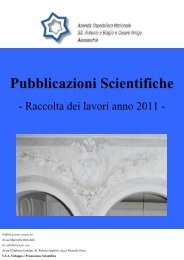Working Paper of Public Health Volume 2012 - Azienda Ospedaliera ...
Working Paper of Public Health Volume 2012 - Azienda Ospedaliera ...
Working Paper of Public Health Volume 2012 - Azienda Ospedaliera ...
Create successful ePaper yourself
Turn your PDF publications into a flip-book with our unique Google optimized e-Paper software.
<strong>Azienda</strong> <strong>Ospedaliera</strong> Nazionale“SS. Antonio e Biagio e Cesare Arrigo”<strong>Working</strong> <strong>Paper</strong> <strong>of</strong> <strong>Public</strong> <strong>Health</strong>nr. 3/<strong>2012</strong>transplantation rates could be higher still except that there is a serious constraint: theorgan donation shortage. The supply <strong>of</strong> organs is smaller than required to keep up withthe demand. Due to this gap, the waiting list for a transplant has increased in mostcountries around the world. Several factors may have caused increase in the demand fororgan transplantation. First, many improvements have been made on immunosuppressivedrugs, especially after the use <strong>of</strong> cyclosporine in the 1980’s, which have tremendouslyimproved graft survival in all types <strong>of</strong> transplantation. Second, there has been an increasein the number <strong>of</strong> surgeons and physicians with specialized knowledge, improvingmedical awareness <strong>of</strong> techniques about transplantation. Third, incidence and prevalence<strong>of</strong> diseases have increased around the world, particularly ESRD 11 . Finally, the graft is setat zero price, as the law in most countries does not permit paying for organs 12 , whichmeans an infinite demand from an economic point <strong>of</strong> view.Another point to highlight is the nature <strong>of</strong> the supply side <strong>of</strong> organ transplantation. For anorgan to be removed, several requirements need to be met. First, the potential donor musthave healthy and well-functioning organs and be free <strong>of</strong> infection and cancer. Second, inmost <strong>of</strong> the cases the cadaveric donation comes from a donor that is declared brain dead,i.e. the donor had suffered complete and irreversible loss <strong>of</strong> all brain functions. To bedeclared brain dead, more than one physician carries out a full range <strong>of</strong> tests, and at leastone <strong>of</strong> them must be not related to the transplantation proceedings. After that, the hospitalmust then communicate the organ procurement to find the recipient that best matcheswith the available organ. Third, the consent for donation needs to be obtained, which<strong>of</strong>ten comes from the donor’s family. Finally, if consent is given, the organ from thedonor must be removed and allocated to the recipient.The above process typically breaks down at one or more stages, resulting in a failure tocollect the organs. Brain death may not be confirmed given the absence <strong>of</strong> staff or11 The ESRD prevalence rate has increased drastically, particularly in North America. In the USA, it wasreported an increasing <strong>of</strong> 70% in the number <strong>of</strong> people on chronic maintenance dialyse from 1991 (573 permillion population -pmp) to 2000 (977 pmp) (Renal Network, 2006). In Europe, this rate was 1360 pmp in1991 and 1393 in 2001 (USRDS, 2006). The lowest prevalence rate <strong>of</strong> replacement therapy was reportedin Latin America, which increased from 119 pmp in 1991 to 352 pmp, a huge increase <strong>of</strong> 295% over tenyears. It is not just the prevalence rate <strong>of</strong> ESRD patients that is increasing, but also the incidence rate. Itmeans that more people are diagnosed as having ESRD, aggravating even more the problem.12 Just in Iran and the Philippines organ sales are legal.5



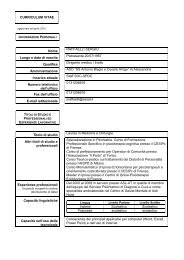
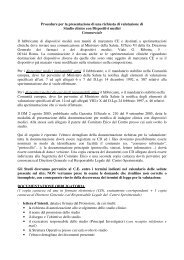

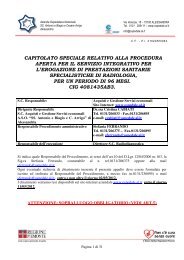
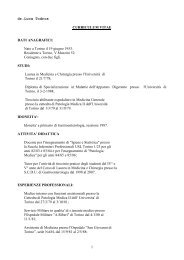
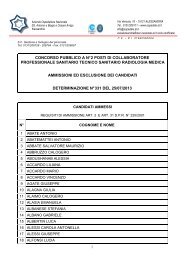

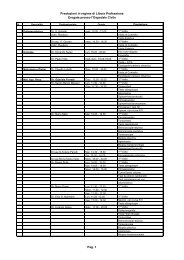


![[torino - 1] lastampa/urc/01 ... 26/10/09 - Azienda ...](https://img.yumpu.com/44058002/1/190x32/torino-1-lastampa-urc-01-26-10-09-azienda-.jpg?quality=85)

